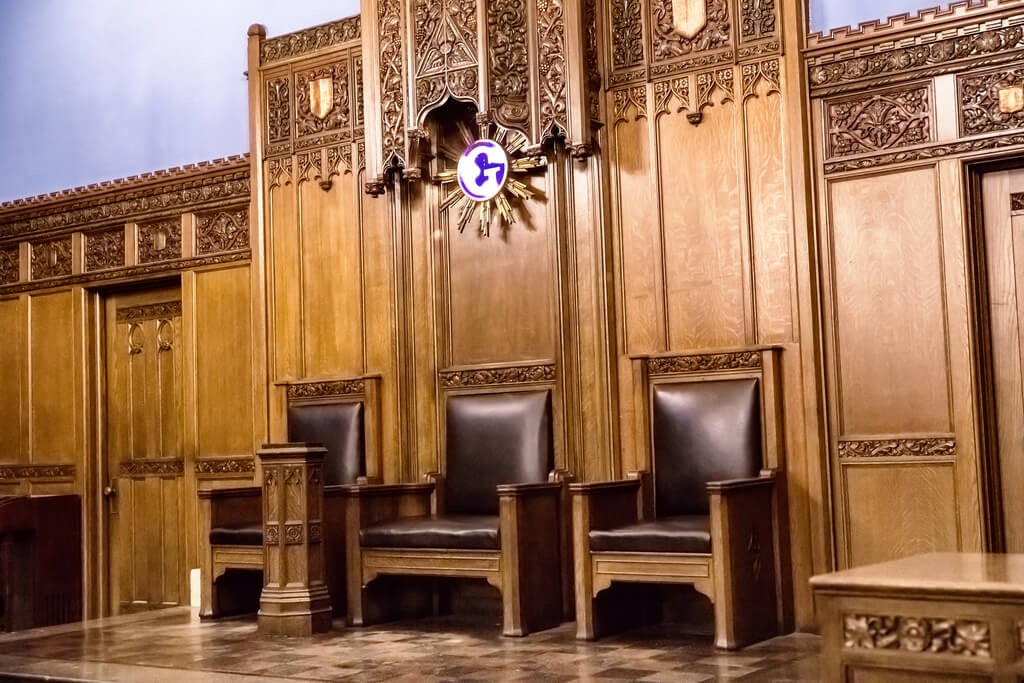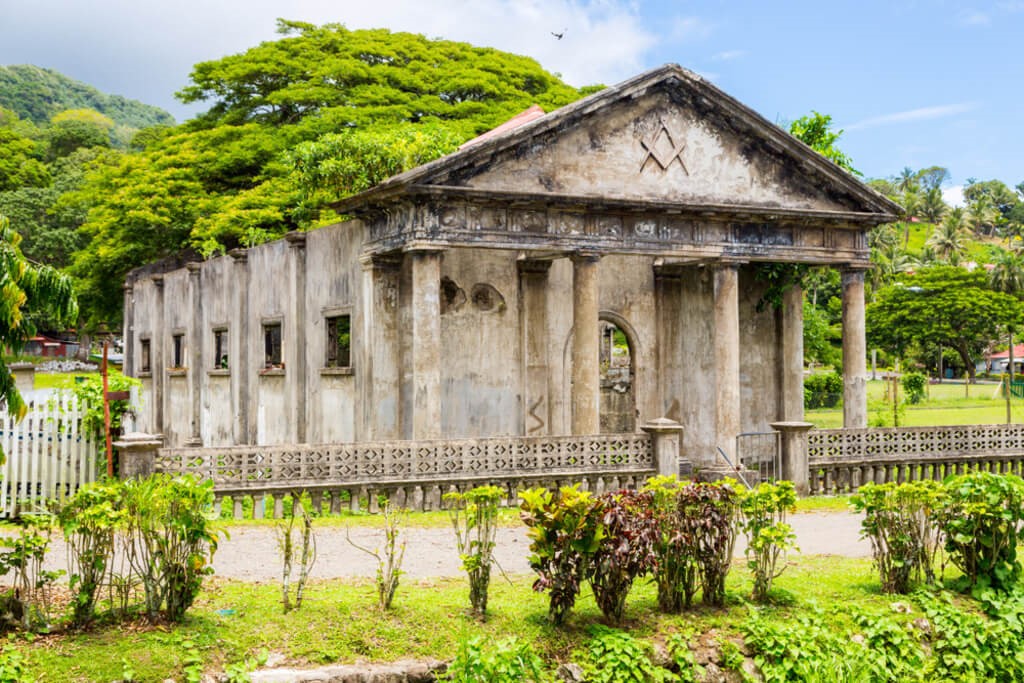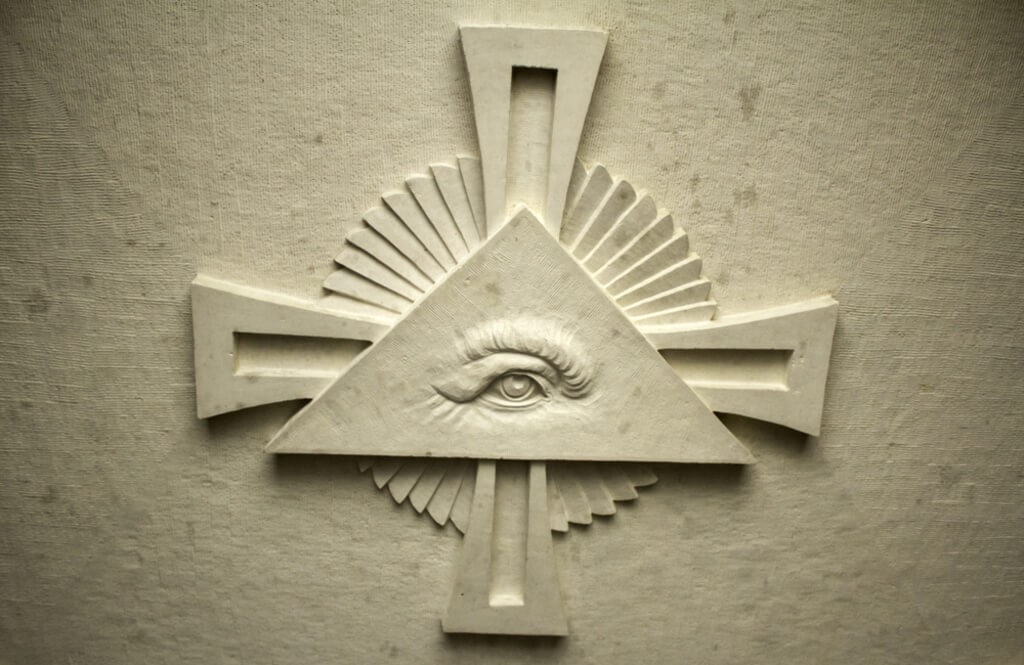What Really Happens Inside a Masonic Temple?
They stand in our towns and cities, often silent and imposing. Grand, windowless structures of stone and brick, marked with the enigmatic symbol of the Square and Compasses. Masonic Temples, or Lodges, are monuments of mystery, sparking whispers and speculation for centuries. What truly goes on behind those heavy doors? Are they centers of world-altering conspiracies, or something else entirely? The truth is far more profound, and infinitely more interesting, than any conspiracy theory. The secrets of a Masonic Temple are not about power or control, they are about building a better self.
This article pulls back the veil, not to expose private ceremonies, but to illuminate the symbolic purpose and profound philosophy that animates these unique spaces. We will walk through the architecture of the soul that these buildings represent, exploring the meaning behind the symbols, the structure of the rooms, and the nature of the "secrets" that Freemasons vow to protect. The journey reveals that the greatest secret is not a password or a handshake, but a timeless method for personal growth and moral development.

What is a Masonic Temple?
A Masonic Temple is a building where a Masonic Lodge, which is a group of Freemasons, holds its meetings. While the terms are often used interchangeably, the "Lodge" is the people, and the "Temple" is the place. It serves as the sacred and private space for conducting rituals, ceremonies, and the administrative business of the fraternity.
Think of it not as a typical clubhouse, but as a dedicated environment designed to facilitate a specific kind of work. This work is not physical construction but moral and spiritual self-improvement. Every element of the Temple, from its layout to its decorations, is a symbolic tool designed to teach the principles of Freemasonry, which include morality, charity, and brotherly love.
These buildings can range from magnificent, purpose-built edifices in major cities to simple, rented rooms in smaller towns. Regardless of its physical grandeur, for the Masons who meet within, it is considered a consecrated space, temporarily transformed into a representation of King Solomon’s Temple, a powerful symbol of building a life pleasing to a higher power.

Why are Masonic Temples so Secretive?
The perceived secrecy of Masonic Temples stems from their nature as private spaces for members, a practice rooted in both historical necessity and philosophical purpose. Freemasonry is not a secret society, as its existence is public and its members are free to identify themselves. It is, more accurately, a society with secrets.
Historically, this privacy was a matter of survival. In eras and regions where Freemasonry was suppressed by authoritarian governments or religious institutions, meeting in secret was the only way to avoid persecution, imprisonment, or even death. This tradition of discretion has carried forward into the modern day.
Philosophically, the privacy of the Lodge room creates a unique and powerful environment. It ensures that the lessons and rituals are experienced in a setting free from outside judgment, ridicule, or distraction. This allows members to be vulnerable, to contemplate profound moral questions, and to form deep, trusting bonds with one another. The solemnity of the experience would be lost if it were a public spectacle.

What Are the Most Important Rooms Inside?
While a Masonic Temple may have many rooms, including dining halls, libraries, and social lounges, the single most important space is the Lodge Room itself. It is here that all Masonic ritual and degree work takes place, and its design is rich with symbolism.
The Lodge Room is almost always a rectangular room, oriented on an East-West axis. It is designed to be a microcosm of the world, a symbolic representation of the universe, and a sacred space where members can connect with timeless moral principles. Its specific furnishings and layout are not arbitrary, they are a carefully constructed allegorical landscape meant to guide a Mason on his journey of self-discovery.

What is the Lodge Room?
The Lodge Room is the heart of any Masonic Temple, and it is where the fraternity’s core allegorical dramas unfold. It is configured to represent the ground floor of King Solomon’s Temple, a biblical structure that serves as a central allegory for the building of a virtuous life.
The room is arranged with specific stations for the Lodge’s principal officers. The leader of the Lodge, called the Worshipful Master, is seated in the East. The Senior Warden is in the West, and the Junior Warden is in the South. These three officers govern the Lodge, and their positions correspond to the sun’s position at morning, noon, and evening, symbolizing the progression of human life.
At the center of the room is the Altar. It is the most sacred and central piece of furniture in the Lodge. Upon it rest the "Three Great Lights of Masonry," which form the spiritual and moral foundation of the entire fraternity. The entire room is designed to draw the eye and the mind towards this central point.

What is the significance of the East?
In a Masonic Lodge, the East holds the highest symbolic importance. It is the station of the Worshipful Master and represents the source of light, knowledge, and enlightenment, just as the physical sun rises in the east to bring light and life to the world.
When a candidate first enters the Lodge, he is metaphorically in a state of darkness or ignorance. The entire Masonic journey is a process of moving towards the East, seeking more light. This "light" is not a mystical force but a metaphor for knowledge, wisdom, virtue, and a deeper understanding of oneself and one’s relationship to God, however the individual conceives of that higher power.
The Master’s position in the East reinforces his role as a teacher and guide. He is responsible for "setting the Craft to work and giving them proper instruction," leading the members in their collective pursuit of moral and intellectual improvement. The symbolism of the East is a constant reminder that the goal of a Mason is a perpetual quest for more wisdom.

Why is the floor checkered?
The iconic black and white checkered floor in a Masonic Lodge Room represents the duality of human life. It symbolizes the mixture of good and evil, light and darkness, and the joys and sorrows that we all experience on our journey through the world.
This mosaic pavement, as it is formally called, serves as a powerful and constant visual lesson for every Mason. It reminds him that human nature and the world itself are composed of opposites. A man’s life is a path walked across this checkered pavement, and he must learn to navigate both the positive and negative aspects of existence with grace, integrity, and balance.
It teaches that one cannot exist without the other, and that true wisdom lies not in seeking only pleasure or avoiding all pain, but in understanding how to maintain moral uprightness amidst the complex and often contradictory experiences of life. It is a symbol of the very foundation of human experience.

What are the Three Great Lights?
The Three Great Lights of Freemasonry are the Volume of the Sacred Law, the Square, and the Compasses. They are the most important symbols in the Craft and are always displayed on the Altar when the Lodge is officially open.
The Volume of the Sacred Law is the holy book of the members’ faith. In most Lodges in the English-speaking world, this is the Holy Bible, but it can be the Quran, the Torah, the Vedas, or another sacred text, depending on the faith of the Lodge’s members. It symbolizes man’s duty to a higher power and provides the moral and spiritual guidance for his life.
The Square is a tool used by stonemasons to ensure perfectly square corners. Symbolically, it represents morality, truthfulness, and honesty. It is the tool by which a Mason is taught to "square his actions" with the principles of virtue. The Compasses, used to draw circles, symbolize the importance of circumscribing one’s passions and desires, keeping them within due bounds. Together, these three lights provide the complete framework for a just, moral, and well-regulated life.

What are the Lesser Lights?
The Three Lesser Lights in a Masonic Lodge are three tall candles placed in specific positions around the Altar. They represent the Sun, the Moon, and the Worshipful Master of the Lodge.
The Sun is a Lesser Light because it rules the day, providing the light and energy necessary for labor. The Moon is a Lesser Light because it governs the night, offering a guiding light in times of darkness. These two celestial bodies symbolize the constant presence of light, or knowledge, available to a Mason 24 hours a day.
The Worshipful Master is considered a Lesser Light because he is, for the duration of his term, the symbolic sun of the Lodge. He is the source of knowledge and guidance for the Brethren, charged with ruling and governing the Lodge with the same regularity and reliability as the sun and moon rule the day and night.

Are There Hidden Chambers or Secret Passages?
Contrary to popular fiction and sensationalist claims, Masonic Temples do not have hidden chambers, secret passages, or subterranean labyrinths. The "secrets" of Freemasonry are allegorical and philosophical, not architectural.
The mystique surrounding the buildings often leads people to imagine a physical world of secrets, but the reality is far more practical. The design of a Lodge Room is symbolic, not clandestine. Its purpose is to be a theater for moral instruction, and its layout is standardized across the world to ensure a consistent experience for Masons wherever they may travel.
The only "hidden" rooms in a Masonic Temple are typically storage closets for regalia and ritual props, or perhaps a small "preparation room" where a candidate waits before entering the Lodge Room for a degree ceremony. The focus is entirely on the symbolic journey that takes place within the main Lodge Room, not on physical concealment.

What “Secrets” Are Actually Revealed Inside?
The secrets revealed inside a Masonic Temple are a system of morality veiled in allegory and illustrated by symbols. They are not secrets of political power or ancient treasure, but secrets of self-discovery, personal responsibility, and the nature of brotherhood.
These secrets are communicated through a series of ritual dramas or allegorical plays known as the Masonic Degrees. In these ceremonies, the candidate is not just a spectator but an active participant. He is guided through a symbolic journey that uses the tools and legends of ancient stonemasonry to teach timeless lessons about how to build a better life. The "secrets" are the profound personal insights one gains during this process.

What are the Masonic Degrees?
The Masonic Degrees are the three stages of initiation into the core of Freemasonry, known as the Blue Lodge. These are the Entered Apprentice, the Fellowcraft, and the Master Mason degrees. Each degree is a formal ceremony that imparts a unique set of moral lessons through allegory and symbolism.
The Entered Apprentice degree is focused on birth, purification, and the beginning of the search for light. It impresses upon the candidate the importance of faith, trust, and the need for a moral foundation. It is the first step out of symbolic darkness.
The Fellowcraft degree is centered on education and the cultivation of the intellect. It encourages the study of the liberal arts and sciences, representing a Mason’s duty to develop his mind and apply reason and knowledge to his life’s work. The Master Mason degree is the culmination of the journey. It confronts the candidate with the themes of mortality, fidelity, and the hope of immortality, teaching the great lesson of faithfulness even unto death.

What is the purpose of Masonic ritual?
The purpose of Masonic ritual is to teach complex moral and philosophical lessons in a memorable and impactful way. Humans learn and retain information more effectively through stories, symbols, and shared experiences than through dry lectures or books alone.
Masonic ritual is a participatory drama. By taking on the role of the candidate, a man is not just told to be virtuous, he experiences an allegory about the importance of virtue. He is not just told to be charitable, he is taught the meaning of charity through symbolic action. This method engages the emotions and the intellect, embedding the lessons deep within the psyche.
Furthermore, the shared, unchanging nature of the ritual creates a powerful common bond among Masons worldwide. A Mason from Texas can visit a Lodge in Japan, and despite language barriers, he will recognize the same ritual and feel an immediate connection. This shared experience is the very fabric of Masonic brotherhood.

Are Masonic secrets just handshakes and passwords?
The special handshakes, words, and signs of recognition are indeed part of Masonic tradition, but they are the least important of its secrets. They are, in essence, the ancient equivalent of an ID badge or a keycard.
In the era of operative stonemasonry, when many artisans were illiterate, a traveling craftsman needed a way to prove his level of skill and training to a new foreman. These modes of recognition served that practical purpose, confirming that he was a qualified member of the guild and entitled to a master’s wages.
Today, in speculative Freemasonry, they serve a similar, though symbolic, function. They are a method for Masons to recognize one another and to guard the privacy of their meetings from non-members. To focus on these tokens is to mistake the key for the treasure it unlocks. The true secrets are the moral lessons that these tokens are meant to protect.

What is the “Great Secret” of Freemasonry?
The great, ultimate secret of Freemasonry is that there is no single, communicable secret that can be whispered in your ear. The great secret is a profound personal realization that unfolds over time through active participation in the Craft. It is the discovery of your own true nature and your connection to all of humanity.
This secret is the lived experience of taking good men and helping them become better, the slow and steady process of chipping away at your own vices and polishing your virtues. It is the feeling of true brotherhood, of being part of an unbroken chain of men stretching back centuries who have committed to supporting one another in the quest for a more noble life.
The secret is not a piece of information, it is a transformation. It is something that cannot be given, only earned. It is the quiet, internal click of understanding when you finally grasp that the tools of the stonemason were never about building a temple of stone, but about building a temple of character within your own heart.
Frequently Asked Questions

Can anyone enter a Masonic Temple?
Many parts of a Masonic Temple, such as dining halls, libraries, or ballrooms, are often open to the public for events, tours, or private functions. However, the Lodge Room itself is strictly private and accessible only to Masons during official meetings and ceremonies.

Are Masonic Temples religious buildings?
No, Masonic Temples are not religious buildings like a church, synagogue, or mosque. Freemasonry is not a religion. It requires each member to profess a belief in a Supreme Being, but it does not prescribe any specific creed or theology, leaving the nature of that belief to the individual’s conscience. The Temple is a sacred space for moral and spiritual contemplation, but not a house of worship.

Do all Masonic Temples look the same?
While Masonic Lodge Rooms share a common symbolic layout, the exterior architecture and interior decoration of Masonic Temples vary widely. They reflect the architectural styles of the era and region in which they were built, ranging from neoclassical and art deco masterpieces to very modest and simple structures. The unifying factor is the symbolic floor plan of the Lodge Room within.

What happens to a Temple when it closes?
When a Masonic Lodge can no longer maintain its Temple due to declining membership or financial reasons, the building is often sold. Many historic Masonic Temples have been repurposed into concert halls, hotels, restaurants, or museums. This allows their beautiful architecture to be preserved and enjoyed by the wider community.

***
The secrets of the Masonic Temple are not hidden in its walls, but in the hearts and minds of the men who meet there. The symbols are not a code for world domination, but a blueprint for self-improvement. The purpose is not to conceal, but to reveal, the better man within. The journey into Freemasonry is a journey inward.
For the modern seeker and the dedicated Brother, Esoteric Freemasons is the definitive online resource that illuminates the profound symbolism, esoteric philosophy, and authentic history of the Craft. We go beyond the surface to reveal the true light of Masonic knowledge. If this exploration has sparked your curiosity, your journey has only just begun. Continue your quest with us, and discover the deeper layers of wisdom that Freemasonry has to offer.




